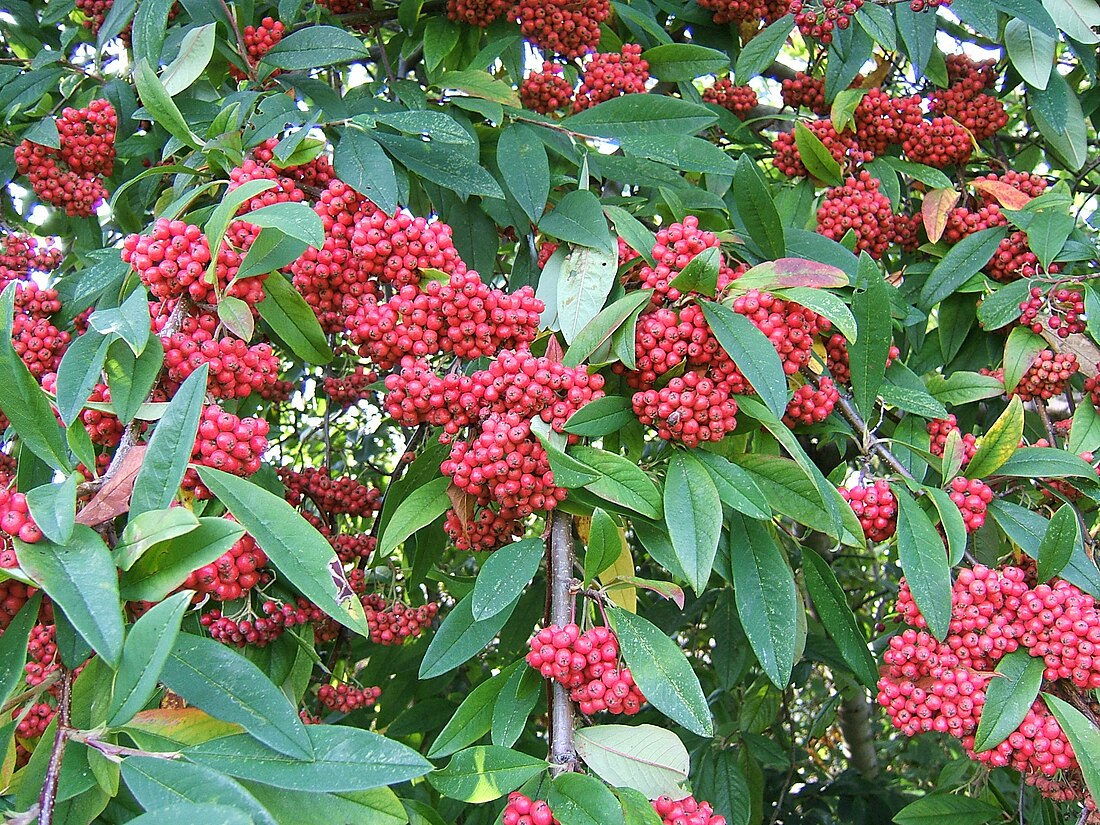Top Qs
Timeline
Chat
Perspective
Cotoneaster frigidus
Species of flowering plant From Wikipedia, the free encyclopedia
Remove ads
Cotoneaster frigidus, the tree cotoneaster,[1][2] is a species of flowering plant in the genus Cotoneaster of the family Rosaceae, native to the Himalayas. It is a deciduous tree or shrub growing to 10–17 metres (33–56 ft), with smooth, matt, alternate leaves 6–12 cm long and 4–5 cm broad.[3] The creamy-white flowers are followed by masses of small, globose, red fruit (pomes) 5 mm diameter in autumn, persisting into winter or later if not eaten by birds.[4][5]

It is widely grown in parks and gardens in temperate regions, and is commonly naturalised as a result of bird-disperded seed in Great Britain and to a lesser extent in Ireland.[2] It is one of the parents of the very popular garden shrub Cotoneaster × watereri;[2] this can be distinguished by its narrower, more lanceolate, slightly more glossy leaves with slightly grooved leaf veins, characters inherited from its other parent Cotoneaster salicifolius.[3] The more compact cultivar 'Cornubia' (syn. C. × watereri 'Cornubia') has gained the Royal Horticultural Society's Award of Garden Merit. It grows to 6 metres (20 ft).[6]
Remove ads
References
Wikiwand - on
Seamless Wikipedia browsing. On steroids.
Remove ads

